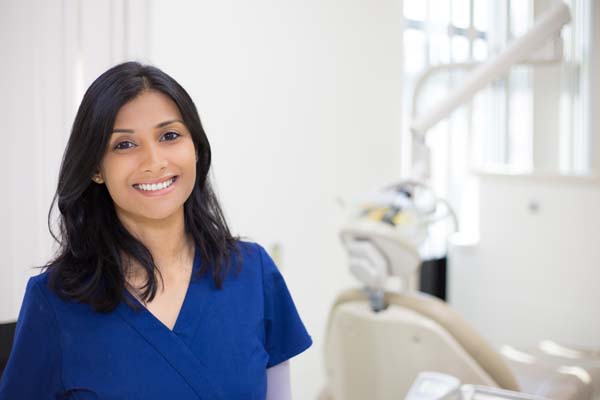When is Gum Grafting Recommended by Your Dentist?

Gum grafting is a procedure that is performed to protect a person's teeth from the effects of gum recession. The procedure can also be performed to improve the appearance of a person's smile.
Gum recession occurs when tissues that support and surround teeth begin to pull away from them. It can result in teeth roots being exposed, which leads to damage to the supporting bone structures that keep teeth in place. It is one of those dental issues that can be hard to detect before it becomes severe.
Many people do not notice their gums receding since the process occurs slowly over time. Exposed teeth roots not only ruin the appearance of a person's smile, but they can also lead to increased sensitivity and decay of the roots. The roots do not have enamel to protect them from the acids in the mouth. Gum recession will eventually lead to a very serious issue if it is left untreated. It can lead to an infection of the roots, damage to jawbone tissue and the eventual loss of a tooth.
How gum grafting is used to treat gum recession
There are three main types of gum tissue grafts that are performed by dentists. Each type is used to deal with a specific set of issues.
1. Connective tissue grafts
This type of graft is commonly used to treat exposed teeth roots. It involves cutting a flap of skin at the roof of the patient's mouth and extracting soft tissues from the area. These tissues are known as subepithelial connective tissues. They are stitched to the gum tissue around exposed teeth roots, and the flap is stitched up once adequate amounts of gum tissue have been extracted.
2. Free gingival grafts
This is similar to the first procedure, but the soft tissue is extracted directly from the roof of the patient's mouth. The tissue is then attached to the area that needs treatment. This procedure is more likely to be performed on people with thin lips as a way to enlarge their gums.
3. Pedicle grafts
During this type of graft, a flap is cut near the tooth that needs to be repaired. The flap is then pulled to cover the exposed root, then it is sewn in place. This procedure is typically reserved for people with lots of healthy gum tissue around their receding gums.
Recovering from gum grafting
Most patients will be able to go home after the procedure. The dentist might administer a sedative to keep the patient relaxed during the procedure, so plans should be made for a ride home.
The dentist will also educate the patient about any medication they need to take and what type of foods to eat during the recovery process. Generally speaking, patients should not brush or floss the gums until the area has fully healed. Antibiotics might be prescribed after the procedure if the patient has gum disease. They need to be taken as prescribed to be effective.
Stop gum recession in its tracks
If you are dealing with a receding gumline, stop by our clinic for an evaluation.
Request an appointment here: https://spectrumsurgical.net or call Facial Spectrum at (816) 524-4334 for an appointment in our Lee's Summit office.
Check out what others are saying about our services on Yelp: Read our Yelp reviews.
Recent Posts
Infections after dental procedures occur frequently and that is primarily due to a lack of education on how to avoid it, however, with the help of an oral surgeon, infections can be avoided in a few ways. Oral surgeons are dental professionals who focus on invasive procedures that are necessary in order to treat or…
Your facial surgeon will prepare you well before your jaw surgery. This invasive procedure can improve your appearance and relieve your pain. It can also enhance your dental health. Here are the important details that your facial surgeon would want you to know before your jaw surgery.The upper and lower jaws are important in completing…
Clinical studies show that the dental implant remains the gold standard of dental restorations. Implants can help bring back your smile and dental function. The right dental professional can perform the procedure without any issues. Here are the details on how an oral surgeon approaches a dental implant surgery.Choosing a dentist who has training and…
A jaw surgery can bring back your smile and dental function. This procedure can restore your self-esteem. It can even open doors for new opportunities in your personal and professional life. Knowing more about this procedure can help you prepare for it. Here are the details on how jaw surgery can help bring back your…


